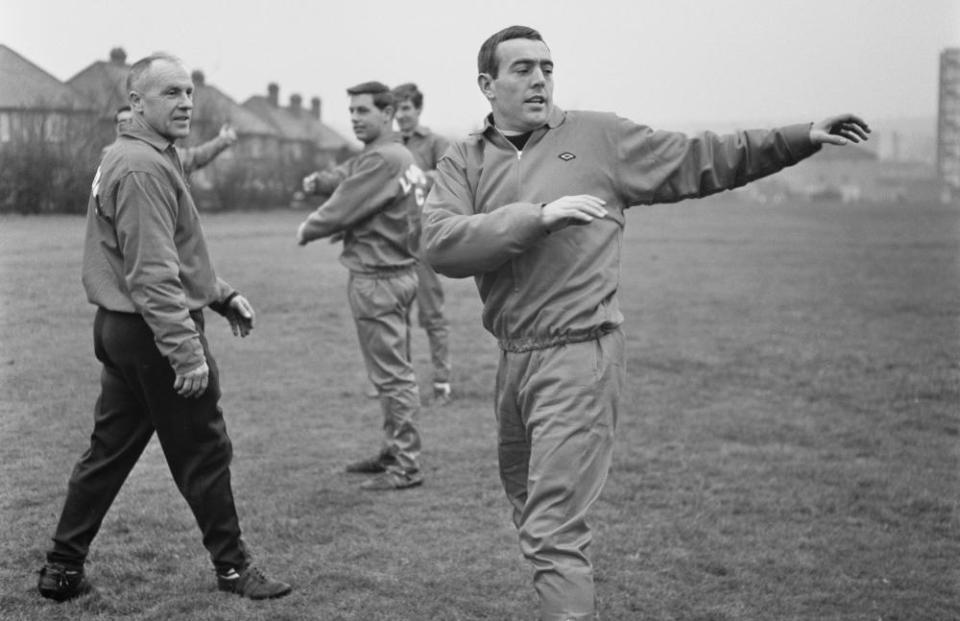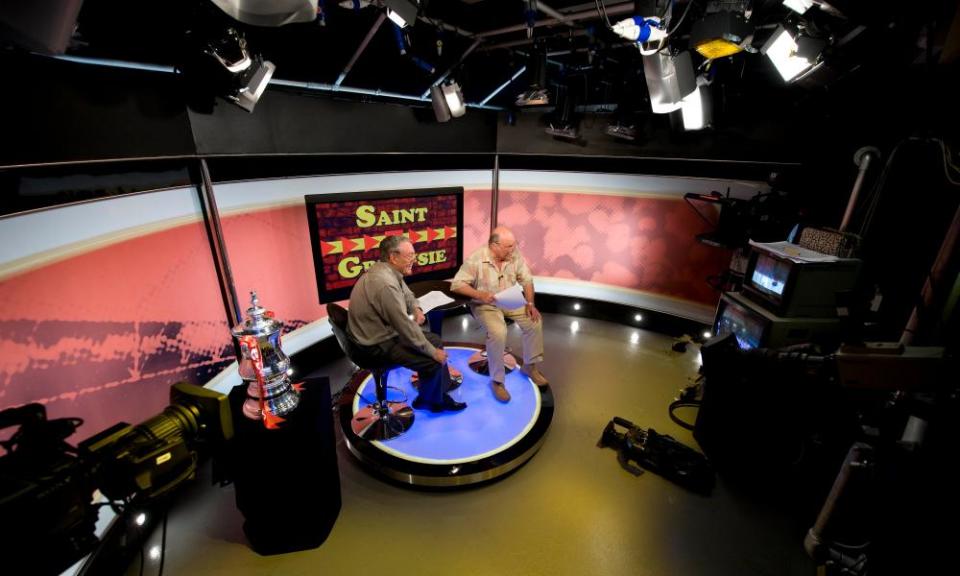Ian St John was key to Liverpool's emergence as a football superpower
Ian St John was a gifted broadcaster. He was the perfect straight man for Jimmy Greaves: he clearly found him hilarious and his chuckle was infectious. It seems almost incredible that Saint and Greavsie ran only between 1985 and 1992; to those of us of a certain age, it seemed eternal, ITV’s light-hearted sibling to the BBC’s more earnest Football Focus. But the oddity of those sportsmen who have successful second careers is that what made them famous in the first place is often obscured.
Say Ian St John today and, for most who know the name, the picture that will come to mind is of a clubbable grey-haired man in a sports jacket, but it shouldn’t be forgotten either what a good player he was or how important in the emergence of Liverpool as a superpower of English football.
Related: Ian St John, Liverpool forward and TV personality, dies aged 82
By the spring of 1961, Bill Shankly was becoming frustrated. He had taken over as manager of Liverpool in December 1959 and, although he triggered an almost instant improvement, they finished third, eight points behind second and promotion. The following season they lacked consistency and finished third again. He needed, he decided, two players: a centre-half and a centre-forward. Before the transfer deadline, he had made an offer for Brian Clough, whose perennial dissatisfaction at Middlesbrough had finally reached the point of departure, but Clough opted for Sunderland instead.
Who else had the attributes he required? Shankly wanted a goalscorer who could play alongside Roger Hunt, somebody with the intelligence to adapt to the system he envisaged with twin strikers, rather than as a focal point supported by wingers in advance of a pair of inside-forwards, as had been traditional. Clough would have been ideal, had even played in a two alongside Alan Peacock at Boro. And then Shankly saw a line in a Scottish paper: Motherwell had made Ian St John available for transfer.

St John had been six when his father, a steelworker, had died. He was one of six children who had been brought up by his mother. He had worked at the Colville steelworks and shown aptitude as a boxer. He would turn 23 that summer but had already scored 80 league goals, was already a Scotland international. He had scored a hat-trick against Hibs in 150 seconds. He was tough, aggressive, clever, bristling with energy and had an eye for goal. He was perfect. Shankly persuaded two directors the club had to sign him, even though it meant a club record fee of £37,500. That same day they drove to Motherwell in a Rolls-Royce belonging to one of the directors to watch St John in a game against Hamilton Academical. They completed the deal shortly after midnight, before Newcastle, who also wanted him, had had time to act.
Ron Yeats joined from Dundee United later that summer. Landing the pair of them, Shankly said, was the turning point. Liverpool were promoted the following season, won the league in 1964 and the FA Cup in 1965, St John scoring the extra-time winner in the final against Leeds. He was the perfect foil for Hunt, but he was also something more. He was brash and irreverent, full of ideas. When Shankly introduced red shorts to replace the traditional white before a European Cup game against Anderlecht in 1964, it was St John who suggested going the whole hog and wearing red socks as well. For the sociologist John Williams in his book Red Men, “St John symbolised the arrival of the 1960s at Anfield”.
For a time, music and football came together in a culture of heady self-confidence, seen most obviously in the mass singing of Beatles songs on the Kop, as recorded by the BBC’s Panorama cameras in 1964. But the first terrace song came a little earlier and simply replaced the words “Let’s Go!” in the Routers’ hit with “St John!” He was the first icon of that side.
St John won another league title in 1966 and played in Liverpool’s defeat by Borussia Dortmund in the final of the Cup Winners’ Cup. But time eats at all teams. Shankly was slow to rejuvenate his first great side, whose longevity is made clear when juxtaposed with the progression of the Beatles, who had soundtracked Liverpool’s first season back in the top flight. In six years, John Lennon had gone from the innocent greetings-card lyrics of She Loves You to Cold Turkey, a harrowing reflection on heroin withdrawal: St John was still playing up front with Hunt.

The sixties could not last forever. After a run of three draws, St John was dropped for the first time, left on the bench for a game at Newcastle, a decision he found out about only when Jackie Milburn, to whom he was chatting in a corridor, was handed a team sheet. Shankly, for all his tough exterior, hadn’t been able to tell him to his face. A few weeks later, when St John complained that the turkey the club had given him for Christmas was on the scrawny side, the club secretary, Bill Barlow, told him the plump ones were for first-teamers. His time at Anfield was nearly done. Few ends in football are glorious; hardly anybody gets the farewell they deserve.
St John’s gifts as a broadcaster, both on television and radio, gave him a second act after an unconvincing dabble in management at Motherwell and Portsmouth. But more than anything, he was a great centre-forward and an integral part of Liverpool in the sixties.

 Yahoo Finance
Yahoo Finance 